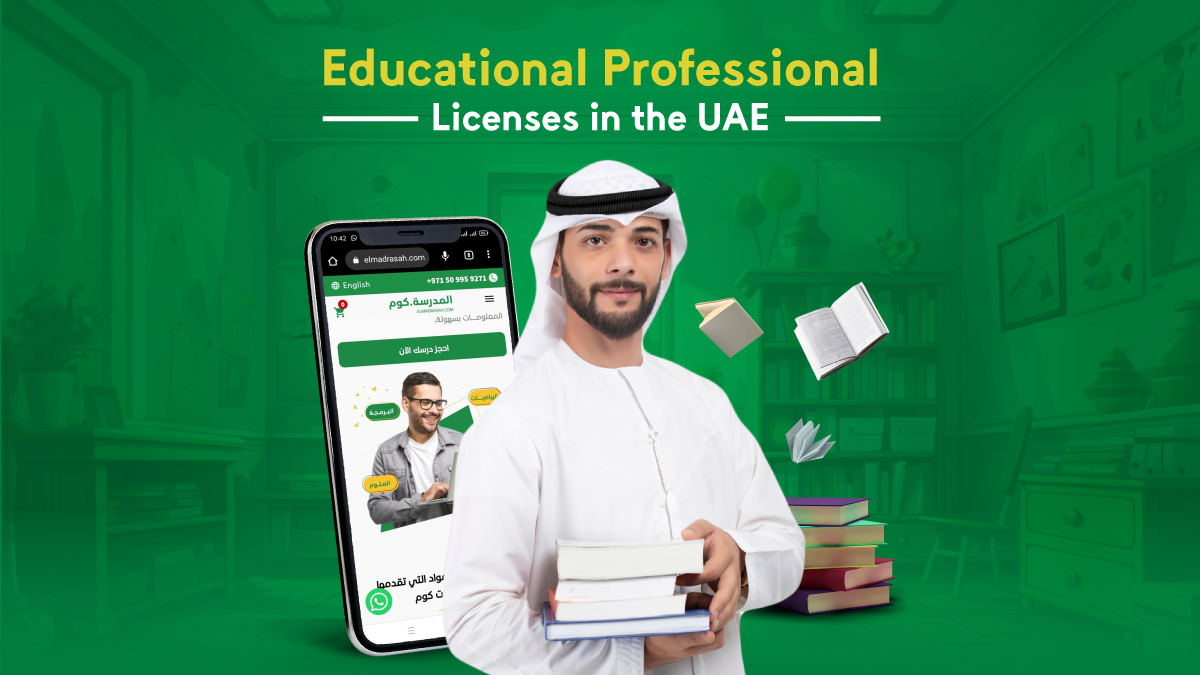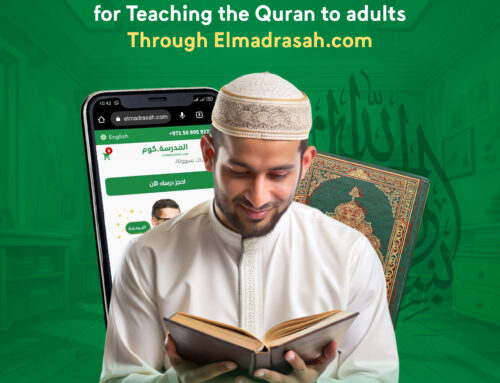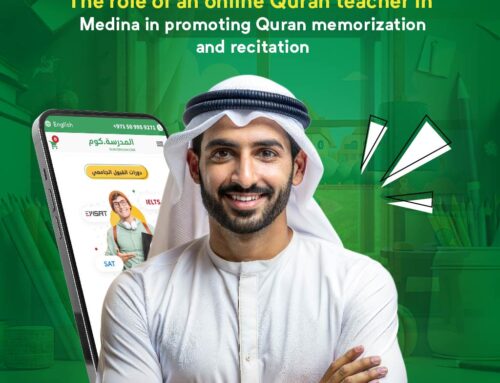
Teaching Professions in the UAE licensing tests of various subjects are an important tool in evaluating and qualifying teachers and improving the quality of education in the emirate. This includes teachers in the Arabic and English languages, biology, chemistry, physics, mathematics, computer science, computer science, technology and design, social studies, and management. Business, science, physical and health education, and religious education, as registration for professional licensing examinations is important to ensure improved development of teachers’ professional skills and knowledge in these various subjects.
Teaching Professions in the UAE for chemistry teachers
To work as a chemistry Teaching Professions in the UAE, teachers must obtain a teaching professions license in the UAE. To obtain this license, teachers must pass a professional examination dedicated to chemistry. This test consists of 120 questions and is 3 hours long.
Topics covered in the qualification test for Chemistry teachers include a wide range of topics such as organic and inorganic chemistry, biochemical methods of analysis, acid and base, quantitative calculations, and thermochemistry.
Among the most important characteristics of the test that the teacher must possess and be fully aware of are the following:
Principles of chemistry include understanding, comparing and applying the following concepts:
- Measurement units.
- Significant figures.
- Heat.
- Material classification.
- Scientific method.
- Uncertainty measurements.
- Dimensional analysis.
- Density.
Inorganic Chemistry To understand, compare and apply the following concepts:
- Atom composition.
- Chemical bond.
- Gasses.
- Solutions.
- Periodic Table.
- Chemical calculations.
- Liquids and solids.
- Acids and bases.
Physical Chemistry to understand, compare and apply the following concepts:
- Thermochemistry.
- Electrochemistry.
- Chemical balance.
- Chemical kinetics.
- Thermodynamics.
Organic chemistry to understand, compare and apply the following concepts:
- Saturated hydrocarbons: alkanes
- Aromatic hydrocarbons
- Alcohols
- Aldehydes and ketones
- Carboxylic acids
- Esters
- Unsaturated hydrocarbons: alkenes and alkynes
- Alkyl halides
- Ethers
- Amines
- Polymers
- Organic reactions
Analytical chemistry to understand, compare and apply the following concepts:
- Experimental measurements
- Microtechniques: pH
- Spectroscopic analysis
- Safety principles
- Determine physical properties
- Qualitative analysis of ions of inorganic substances
- Hazardous chemicals
Nuclear chemistry to understand, compare and apply the following concepts:
- Nuclear fission
- Uses of radioactivity
- Radioactive decay
- Nuclear transformation
- Nuclear fusio.
Qualification guidelines for physics teachers
To work as a physics teacher in the UAE, you must pass the Teaching Professions in the UAE Test for Physics. This test consists of a variety of physics-related topics, as follows:
- Mechanics of this area measures the test taker’s understanding of translational motion, rotational motion, and fluid mechanics.
- Mathematical Physics the test taker must be able to use mathematical and analytical methods to explain and describe the behavior of systems in physics in scientific form.
- To have the ability to describe and write analogies with significant figures.
- To be able to estimate numerical values for different quantities and classify them.
- Able to set physical quantities, add and subtract approximate values, and analyze vectors.
- To demonstrate a deep understanding of various physical techniques.
- Analyzing data to reach scientific results and their interpretations.
- The test taker must have the ability to follow the scientific method to conduct basic physical measurements, analyze them, and write them in appropriate units of measurement.
- To be able to perform dimensional analysis of various physical equations.
- Able to collect measurements, represent them graphically, analyze them, and calculate the error rate.
- The test taker must have an understanding of static electricity, electric current, and magnetism.
- Demonstrate understanding of all phenomena and applications related to static electricity.
- Aware of describing electrical charges in AC circuits in terms of properties and applications.
- Analyze and explain phenomena and properties related to electrical charges.
- An understanding of the concepts of magnetism and associated magnetic phenomena.
- Able to understand waves, optics, modern physics and some required mathematical skills such as arithmetic, algebra, trigonometric functions, integration and division.
Qualification guidelines for mathematics teachers
These are important requirements for teachers who want to teach mathematics in Emirati schools. These guidelines include passing a test of Teaching Professions in the UAE, which specializes in mathematics, which requires teachers to demonstrate in-depth knowledge of various mathematics topics, and these sections may differ between first grade teachers and middle and high school teachers. The sections include characteristics of teacher tests for grades 3-8:
Field 1: Number and quantity
- Installation of number systems, including:
- Place value concepts; ordering relationships, relationships with operations, multiple representation of numbers, factors and divisibility, prime and complex numbers, prime factorization, and properties of number systems.
- Operations on integers, rational numbers, percentages, ratio and proportion relationships, including: Arrangement of arithmetic operations, neutral elements and isotopes of inverses (additive, commutative, and distributive properties, absolute value, multiple representations of numerical operations, analysis of algorithms for addition, subtraction, multiplication, and division of integer and rational numbers, and number operations and their inverses.
- Applications to integers, rational numbers, percentages, ratio and proportion relationships, including: Life applications using number systems and the average rate of change; and using predictions to verify the logic of solutions to mathematical problems.
- Composition of the real number system, including:
Rational numbers and irrational numbers and operations on them, properties of real numbers, operations and their inverses, real number line, roots and exponents. Laws of exponents; scientific image; use properties of numbers to prove theorems.
Field 2: Algebra, including:
- Patterns of numbers, geometric shapes or tabular data, symbolic expression, patterns resulting from functions; Finite and infinite sequences and series.
- Understand the concept of variables; finding the value of algebraic traces for specific values of variables; the relationship between mathematical algorithms and algebraic operations; Expressing direct relationships and inverse relationships.
- The difference between functions and relations; types of functions, generating and processing curves; Properties of functions and relationships.
- The relationship between linear models and rate of changes; direct; Graphs of linear equations; Slope and intercepts of lines; Straight-line equation; A system of linear equations and inequalities; Modeling using linear functions and systems.
- Solving quadratic equations and inequalities; The real and complex roots of quadratic equations; Maximum and minimum value problems; Modeling using quadratic relationships, functions and systems.
- Exponential growth and decay; Inverse changes, modeling using rational functions; Absolute value functions, and numerical solutions to exponential functions.
Field 3: Engineering and Measurement
- Synthesis of Euclidean geometry, including: Understand the nature of intuitive systems; Terms, theorems and axioms of Euclidean geometry and undefined limits; Relationships between points, lines, rays, angles, and planes; Conditions for congruence of triangles; Similar triangles and geometric constructions.
- Two-dimensional shapes, including: Relationships between triangles, quadrilaterals, and other polygons; Identify the given plane shapes in terms of the properties of sides, angles, and diagonals; Phitagors theorem; Relationships of a right triangle; Arcs, angles, and sectors of polygons and circles, area of complex shapes; Modeling and solving problems containing two-dimensional shapes.
- Three-dimensional shapes, including: The relationship between area and volume in three-dimensional figures, perspective drawings, and projections; Cross sections include conic sections and meshes; Deriving properties of 3D shapes from 2D shapes.
- Coordinate and translational geometry, including: Representing geometric shapes in the coordinate plane, concepts of distance, midpoint, slope, parallelism and perpendicularity of lines to classify and analyze shapes, withdrawal, rotation, reflection and expansion, transformations in the coordinate plane, and using transformational geometry to prove and solve problems.
- Concepts and procedures associated with measurement, including: Use appropriate units of measurement, unit conversions within and between measurement systems; Solve problems involving length, area, volume, mass, capacity, density, time, temperature, angles, and rate of change, and problems involving similar plane shapes and indirect measurements, the effect of changing linear dimensions on measurements of length, area, or volume, The effect of error in measurement and rounding on the calculated quantities.
Area 4: Statistics and Probability
- Charts, graphs and tabulated data, determining appropriate sampling and data collection methods.
- Statistical measures, including variance, frequency distributions, affected data transformations in measures of central traces and mutability, interpretation of correlation, and issues including the linear regression model.
- Representing the expected outcomes of a probabilistic situation; Counting strategies, calculating theoretical probabilities for simple and complex events.
The characteristics of Teaching Professions in the UAE tests for mathematics for grades 9-12 include:
- Number and quantity
Structure of number systems, place value, ordering relationships, relationships between operations, multiple forms of numbers, absolute value, integers and rational numbers, ratio and proportion.
- Real and complex number systems
Rational and irrational numbers, various forms of complex numbers, properties of real and complex number systems, operations on complex numbers, laws of exponents, roots and exponents of real and complex numbers, factors and divisibility, primes and complex numbers, factorization of prime numbers, Euclid’s algorithms, identity groups and modular arithmetic, the fundamental theorem of arithmetic.
- Algebra
Numerical, geometric or tabular patterns, symbolic expression, patterns resulting from functions, recursive functional relationships, Pascal’s triangle and the binomial theorem, finite and infinite series and sequences, functions and the relationships and differences between them, functions represented by more than one base, composite and inverse, graphs of functions and their transformations, graphs Graphs of linear functions.
- Algebra applications
Properties of matrices and determinants, solving linear systems using matrices, geometric and algebraic properties of vectors, properties of space vectors, representation of linear transformation using matrices, quadratic functions and relationships, simplifying quadratic expressions, real and complex roots of equations, maximum and minimum value problems modeling using quadratic relationships, functions and systems Limits Rational and radical functions, absolute value and relationships, exponential and logarithmic functions and relationships
- Measurement and engineering
The structure of Euclid’s geometry, axiomatic systems, undefined limits, axioms and theorems, axioms for measuring angles and distance, properties of perpendicular and parallel planes and lines, properties and theorems of circles, two- and three-dimensional bodies, special relationships of right triangles, perspective drawings and projections, coordinates and transformational geometry, coordinates Polar and Cartesian, three-dimensional coordinate systems, withdrawal, rotation, reflection.
- Statistics and probability
Descriptive data and statistics, representation with graphs and tables, identifying appropriate techniques for sampling and collecting data, designing statistical experiments, frequency distributions, the effect of data transformation on the measurement of central traces and variance, interpretation of correlation, probabilities of simple and complex events, simulations for probability analysis, random variables and probability distributions.
- Trigonometry, calculus and discrete mathematics
Properties of sets, counting techniques, finite differences, financial mathematics, recurring patterns and relationships, recurrence of operations, properties of matrices, finite graphs and graphs, law of sines and cosines, properties and graphs of trigonometric functions and their inverses, trigonometric identities, limit calculus, limits of algebraic functions, Limits of infinite series and series, continuous and discontinuous functions, the relationship between the secant line and the average rate of change of the function, differentiation and integration.
Qualification guidelines for early childhood teachers
Good qualification of early childhood teachers is crucial in providing high-quality education to children in the UAE. These guidelines require passing the UAE Teaching Professions in the UAE Professions Test in the field of basic education. The characteristics of this test include:
- Academic skills
Reading and writing skills in the Arabic language for those who study the majority of the various academic subjects in Arabic, or the English language for those who study the majority of the various academic subjects in it, or the language preferred by the teacher for the test.
- Good knowledge of numeracy skills. The teacher’s knowledge should include the basic principles of early education, including the child’s development and his or her educational, social and emotional needs.
- The teacher must have effective communication skills with children, parents, guardians, and co-workers. Must have the ability to communicate in understandable, friendly and patient language.
- To be able to plan and implement diverse and organized educational activities. Must be able to prepare lessons and prepare teaching materials effectively.
- The test also includes an assessment of the teacher’s ability to manage the classroom and deal with a multicultural educational environment and needs.
- The teacher must be able to employ creativity and critical thinking in teaching and develop innovative teaching strategies to meet the needs of students.
- The teacher must demonstrate a commitment to ethical values in his dealings with children, co-workers and the community in general.
- The teacher must be a professional in using technology effectively to support education and communicate with parents and guardians.
In conclusion, these specifications come as part of the testing for educational professions licenses in the Emirates to ensure the quality of education in these various subjects within the framework of developing the professional competence of teachers and specialists in schools in the United Arab Emirates. Professional licensing tests are considered an essential tool for evaluating and qualifying teachers for optimal teaching practice, as registration in Teaching Professions in the UAE licensing tests improve the quality of education and ensure continuous development of the skills of teachers and specialists. Teachers can use elmadrasah.com courses to obtain extensive training to solve these tests through the comprehensive, individual, direct courses of this platform.















